In Valerie Stivers’s Eat Your Words series, she cooks up recipes drawn from the works of various writers.
“An Onion” is one of the most famous chapter headings in Dostoyevsky’s The Brothers Karamazov, and refers not to Russian cuisine, in which onions are a staple ingredient, but to a story a female character, Grushenka, tells, about a wicked old woman being pulled up from the fires of hell by holding onto an onion proffered by her guardian angel. The woman lived a bad life but once gave an onion to a beggar, and it’s this single good deed that might save her. The anecdote is meant to demonstrate the possibility of God’s forgiveness, and its teller, Grushenka, says of herself in one of the book’s climactic scenes, “though I am bad, I did give away an onion,” indicating her readiness to be saved. (As for the old woman, the other dammed souls try to grab her feet and be pulled up too, and she selfishly starts kicking them away. The onion breaks, “and the woman fell into the lake and she is burning there to this day.”)
Dostoyevsky is known for bleakness, but he’s primarily a Christian writer. His three Karamazov brothers and one half-brother are fallen men, characterized by “sensuality,” “baseness,” and a “frantic and perhaps unseemly thirst for life.” They are frequently referred to as “insects.” When one of them murders Karamazov père, it’s suggested that we’d all be doing such things without the restraining hand of faith. The idea that “everything is lawful” without God is one of the book’s major themes. Sensual pleasures, then, of sex and food and drink are the terrain of the Karamazovs, but that’s not a good thing. The characters tend to eat ridiculous, unnatural or imported foods—“blue raisins,” a “pineapple compote”—to demonstrate their vanity. Dmitry Karamazov, the oldest brother, not a bad man, but one who is controlled by his passions, wastes “Strasbourg pies, smoked fish, ham, caviar, and everything, everything they’ve got,” on peasants during his notorious drinking binges. For dessert, Dmitri orders, “sweets, pears, watermelons, two or three or four—no, one melon’s enough, and chocolate, candy, toffee, fondants.” The brothers’ lustful and profane old father is also frequently seen at the table, eating and drinking in a room furnished with “old fashioned ostentation.” “‘Take some cold coffee and I’ll pour a quarter of a glass of brandy into it, it’s delicious, my boy,’” he offers his monkish younger son Alyosha, at one point, practically smacking his lips. And then there’s Smerdyakov, the epileptic fancy-man half-brother. He’s Dostoyevsky’s most evil character, a man so completely without God that the possibility of his existence is one of the text’s puzzles of religious philosophy. Smerdyakov is too loathsome even for sensuality, but he is physically vain, spending his salary on “clothes, pomade, perfumes, and such things.” And weirdly, after the father sends him to Moscow for training, he becomes “a first-rate cook.” Ivan once calls him a “soup-maker!”—as an insult.
Every time I read this book, I love a different character. As a teenager, it was Alyosha, Dostoyevsky’s example of man at his moral best. In college it was Ivan, who rejects God for allowing human evil (The chapters “Rebellion” and “The Grand Inquisitor,” which advance this argument, are even more famous than “An Onion.” ) This time it was the bad characters, the venal old father, the terrible Smerdyakov, and especially Grushenka, whose name means “little pear” in Russian. It’s her pretty face, pleasing shape and bewitching sexuality that sets off the conflict between the Karamazov brothers and their lecherous old father that leads to the old man’s murder. Grushenka is set up as a fallen woman, but especially to the modern eye she’s sympathetic. Seduced and abandoned as a young girl, she’s gained her independence, saved money, speculates with it, and is “ ‘a wench with brains,’ ” one character says.
I was at first tempted to say that sympathy for these characters is not the book’s intended reading, but then, in a deeply religious book about forgiveness, I am not so sure. And sensuality infused with goodness—with faith, in the presence of God, I think Dostoyevsky would say—becomes something different. The best meal in the book is served in the monastery, and there’s nothing base or corrupted about its pleasure.
With that in mind I made a simple, summery Russian menu for the evil characters. Kvass is mentioned in that monastery dinner scene. This is a classic Russian fermented drink made from black bread, which used to be sold from barrels on the streets. My Russian husband liked to drink it on a hot day as a teenager. It requires 100-percent rye bread of good quality (I got mine in Brooklyn’s Brighton Beach) and a two-day fermentation cycle, but it’s not complex to make. For Grushenka, working off of the onion scene, I made a type of open-faced, onion-filled bread called a vatrushka, which is something like a savory Russian danish. I also made her a pear tart, playing off the “little pear” of her name and the sluttiness of her reputation. The tart is French-influenced, but that’s appropriate because so were Russians in those days. For the fig jam in my tart recipe, I substituted one of zemlika, or wild strawberries, which grow everywhere in the Russian countryside and are the source of a popular home-made jam. Lastly I made a fancied-up version of Ukha, a fish soup that Smerdyakov cooks for the old father (the type of soup is specified in the Russian-language original but not in the translation). This is not an elevated soup, but something a fisherman would make in a bucket with the catch of the day. Mine turned out beautifully despite its simplicity—bay leaves, barley, fish, carrots, potatoes, a little chunk of celery root. It filled my apartment with a divine, smoky aroma, and somehow was infused with spirit that made it much greater than the sum of its parts. I ate the leftovers for lunch three days running and it only got better. What accounted for its campfire-on-the-banks-of-the Volga aroma and transcendent deliciousness, God only knows.
Russian Kvass
10 cups of water, plus 1 cup of water
1/2 lb 100-percent rye bread or other black Russian bread
1 1/2 cups sugar
15-20 raisins
1/2 packet of yeast
Note: You will need a gallon pitcher or jug that can go in your refrigerator.
-Toast the bread in a 350 degree oven for 30 minutes, until crisp and dry.
-Meanwhile, bring the water to a boil in a large stockpot, and turn it off. When the bread is toasted, add the bread and the raisins to the water. Cover and leave to sit for 8 hours or overnight.
-Carefully remove the bread from the liquid and discard the bread. Transfer the mixture to a gallon jar or pitcher.
-Proof the yeast by combining it with 1 tbs warm water and 1/2 tsp sugar, and leaving it to puff up. Meanwhile, put the sugar and the 1 cup of water in a small saucepan and bring it to a boil. Simmer for 10 minutes to make a simple syrup. Let cool somewhat.
-Add the yeast mixture and the simple syrup to the bread-liquid. Cover with a cheesecloth and leave to ferment, for six hours or overnight.
-Strain the mixture gently through a cheesecloth and refrigerate for 24 hours before serving, covering loosely since carbonation will continue to build up. Serve cold.
“An Onion” Vatrushki
Adapted from The Art of Russian Cuisine by Anne Volokh.
Note one: The rise on the dough and multiple steps required for assembly of the vatrushki make this a time-consuming recipe. Pre-cooking the filling the day before is recommended.
Note two: You’ll need a 2 1/2 inch and a 4-inch round cookie cutter. You can use a glass or saucer with those-sized openings, but it will make the dough harder to work with.
Ingredients:
1 recipe Russian yeast dough
1 recipe onion filling for vatrushki
2 tbsp melted butter, for brushing
1 egg yolk, plus 1 tsp each oil and water, for brushing
For the yeast dough:
1/2 package active dry yeast
2 tbsp plus 1/2 tsp sugar
2 tbs warm water
3 1/2 cups flour
3/4 tsp salt
1 1/2 cups warm milk
2 egg yolks
2 egg whites
6 tbs unsalted butter, melted
-Proof the yeast. Pour the yeast into a small bowl containing 2 tbsp warm water. Add 1/2 tsp sugar and stir. Place in a warm place for 10-15 minutes until the yeast has swollen and has begun to bubble.
-In a large bowl, combine 2 1/2 cups of flour, 2 tbsp sugar, and 3/4 tsp salt. Add the yeast mixture and the milk and stir with the handle of a wooden spoon for 5 minutes, until the mixture begins to look stretchy.
-Beat the egg yolks with a fork to blend. Separately, beat the whites until stiff. Blend both into the dough, folding carefully with a wooden spoon, until combined. The dough should look wet and a little bubbly.
-Add 1/2 cup of the remaining flour, and blend until combined. Add one half of the melted butter and knead for a few minutes, until the butter is combined. Add the rest of the butter and knead again until all the butter is absorbed by the dough. Use the remaining 1/2 cup flour if necessary to powder your kneading surface and keep things from getting too sticky. Continue kneading for about 15 minutes until the dough is smooth, silky and elastic, and starts peeling off your fingers.
-Form the dough into a ball and place in a large, generously buttered bowl. Leave to rise in a warm place for 1 1/2 to 2 hours, until doubled in bulk. Punch down and leave to rise until doubled again, about 45 minutes. The dough is now ready to be used.
For the onion filling:
5–6 medium onions
4 tbsp unsalted butter
salt and pepper to taste
1 egg, beaten with a whisk for 1 minute
-Slice the onions finely on a mandolin, then roughly chop them.
-Melt 2 tbsp butter each in 2 large skillets. Add the onions and cook, stirring occasionally, on medium-low heat until they’re dark-to-blackening, sweet, and nearly dehydrated; this can take up to an hour. Salt and pepper to taste.
-The filling recipe can be set aside at this point until you’re ready to assemble the vatrushki. Stir in the beaten egg just before assembly.
To assemble and bake the vatrushki:
-Preheat the oven to 350.
-Assemble your materials. Butter two cookie sheets. Beat 1 egg yolk with 1/2 tsp each oil and water, for brushing. Melt 2 tbsp unsalted butter, also for brushing. Get out your 4-inch and 2 1/2-inch round cookie cutters.
-On a floured surface, roll out the dough very thinly, to 1/4 inch if possible. Cut out twelve 4-inch circles, using a cookie cutter or saucer. (See note two, above). These are the bases of the vatrushki. Transfer them to the baking sheets. Brush with egg mixture, being careful to get all the way to the edges.
-Re-roll the scraps if necessary and cut 12 more circles. Use the 2 1/2-inch cookie cutter to remove the centers, so you have a ring with a 4-inch diameter. Put these carefully on the bases.
-If you haven’t already added the beaten egg to the filling, do so now. Fill the opening of the vatrushki with the onion mixture. The centers should be heaping but not towering. Set aside, covered with damp cheesecloth or a damp towel, to rise for 20 minutes.
-When the vatrushki have risen, brush the outer edges with the egg-mixture and bake for 15–20 minutes, until golden brown. Let cool and brush with melted butter before serving.
Soup For Smerdyakov
8 cups cold water
10 peppercorns
3-4 bay leaves
2oz chunk of celery root
1 whole, white-fleshed river fish, branzino, snapper, trout, etc., head and tail removed; use 2–3 if the fish are very small
1 large potato, peeled and chopped
3 carrots, peeled and chopped
1 cup pearl barley, cooked
1/3 cup parsley and dill, very finely minced
2 tbsp preserved lemon, diced
-Put the fish in the water with the peppercorns, bay leaves and celery root. Bring to a boil, then simmer for 20 minutes until the fish is cooked through. Remove the fish and set aside. Strain the liquid and return to the pot.
-Add the potatoes and carrots to the fish stock, and bring to a simmer. Cook until the vegetables are tender, 10–20 minutes. Meanwhile, when the fish has cooled, pick the flesh from the skin and bones and set aside.
-When the vegetables are tender, add the flaked fish and barley, and simmer for 5 minutes. Turn off the heat and add the parsley and dill and the preserved lemon. Serve immediately or re-heated. This soup is even better when the flavors have had a chance to meld.
A Pear Tart for Grushenka
This recipe is adapted from the one found on The Mediterranean Dish.
1 recipe tart shell, pre-baked (I use this one from Smitten Kitchen)
8 pears, ripe, but not overly so
3 tbsp unsalted butter
3/4 cup wild strawberry jam (or a chunky fig jam)
1/4 tsp salt
-Preheat the oven to 350.
-Heat the jam in the microwave for 40 seconds, then strain, separating the liquid from the chunks. Reserve both.
-Slice five of the pears into 1/2 inch slices, discarding the cores. Heat 1 tbsp of the butter in a large skillet. Add the pears, cover, and cook for for 3 minutes, until slightly tender. Remove the pears to a large platter and let cool.
-Take the remaining three pears and cut them in the same manner. Now melt 2 tbs of butter in the skillet, add the pears, the wild strawberry or fig chunks, and salt. Cover and cook for 10 minutes, until very tender. Take a potato masher and mash the pears and strawberry or fig chunks into a puree. Uncover and cook for 15-20 minutes more, until the sauce thickens and reduces to a sticky jam.
-Transfer the pear-strawberry puree onto the pre-baked pie crust. Spread evenly. Now take the cooled pear slices and begin to assemble them in layered circles, starting at the outer edge of the tart shell.
-Bake for 30 minutes. When the tart is done baking, brush it with the reserved jam liquid. Set the oven to broil, and return the tart for 5 additional minutes, until the surface is glossy and the crust is crisped. Cool before serving.
Valerie Stivers is a writer based in New York.
Read earlier installments of Eat Your Words here.
from The Paris Review https://ift.tt/2Hwm0fE
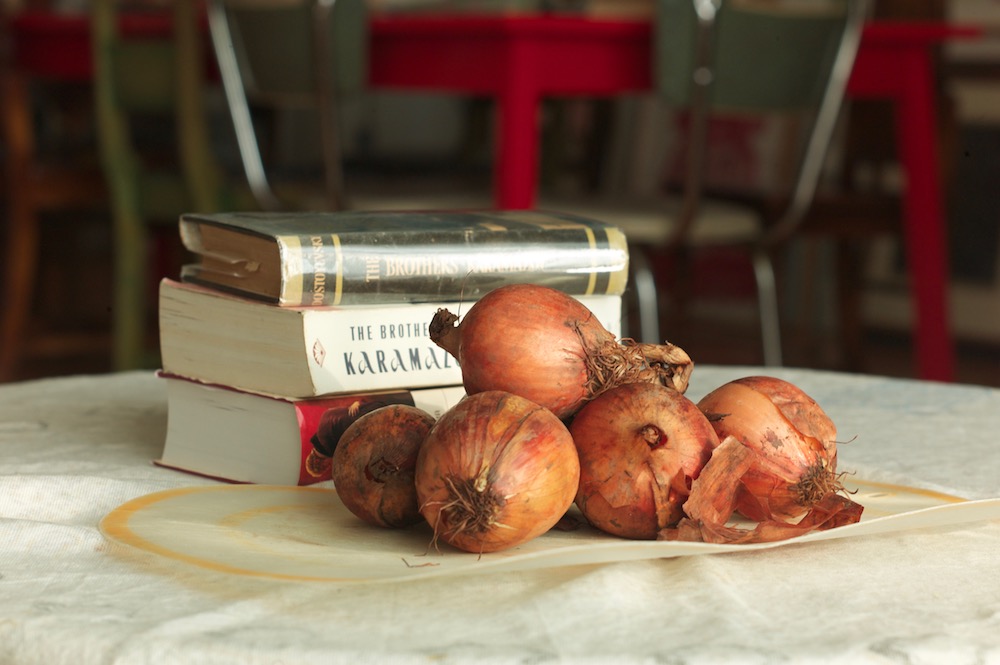
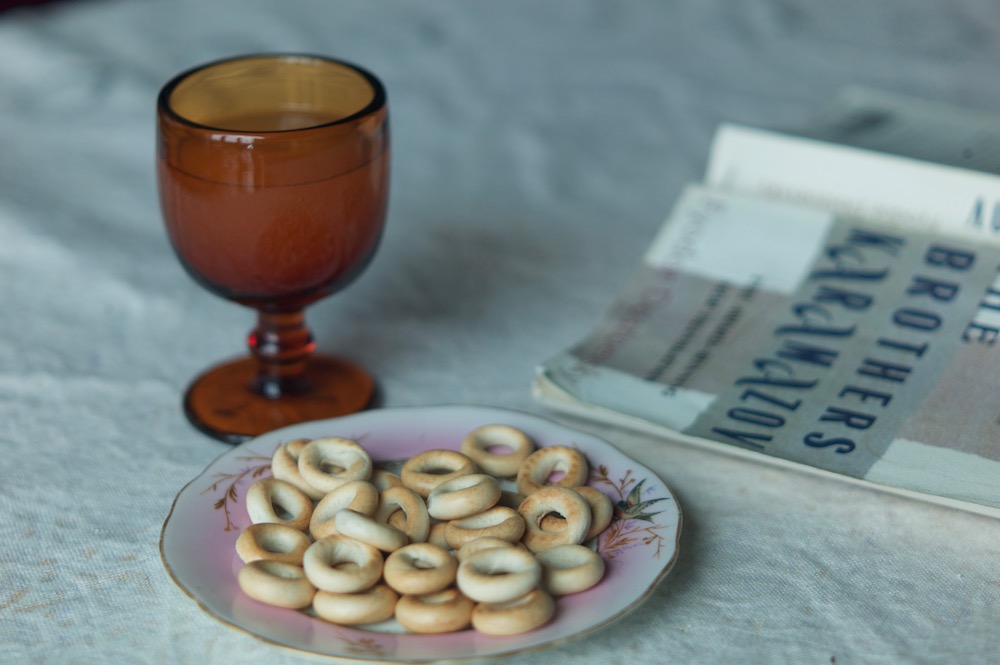
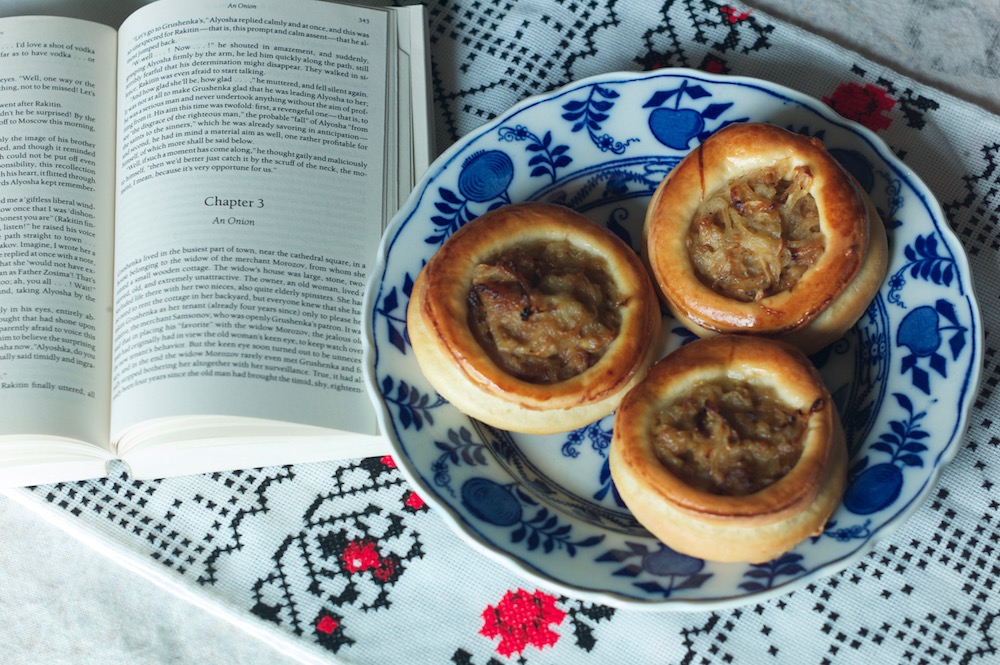
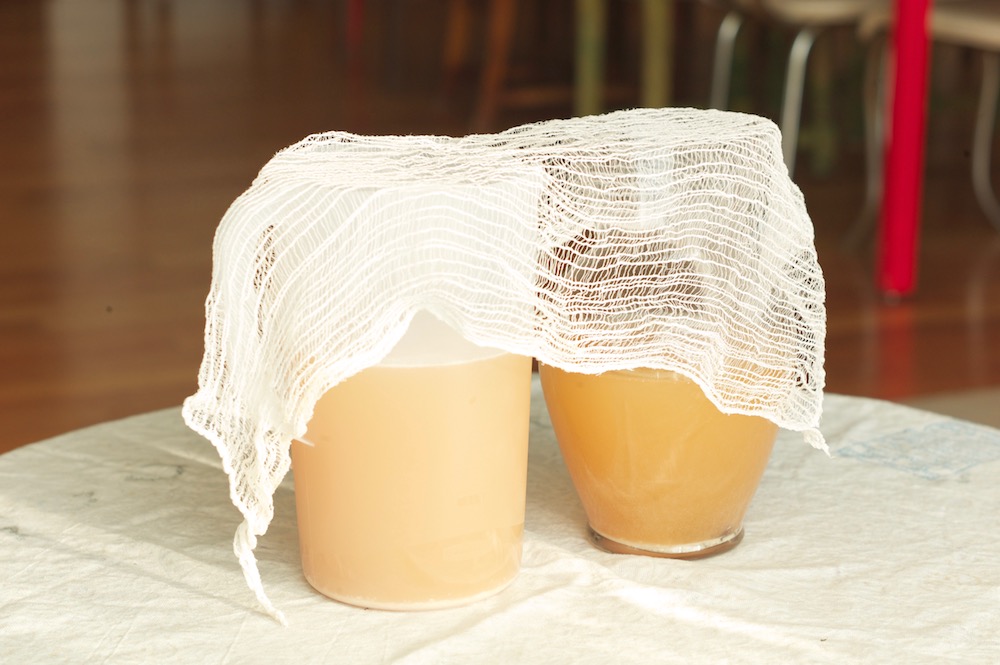
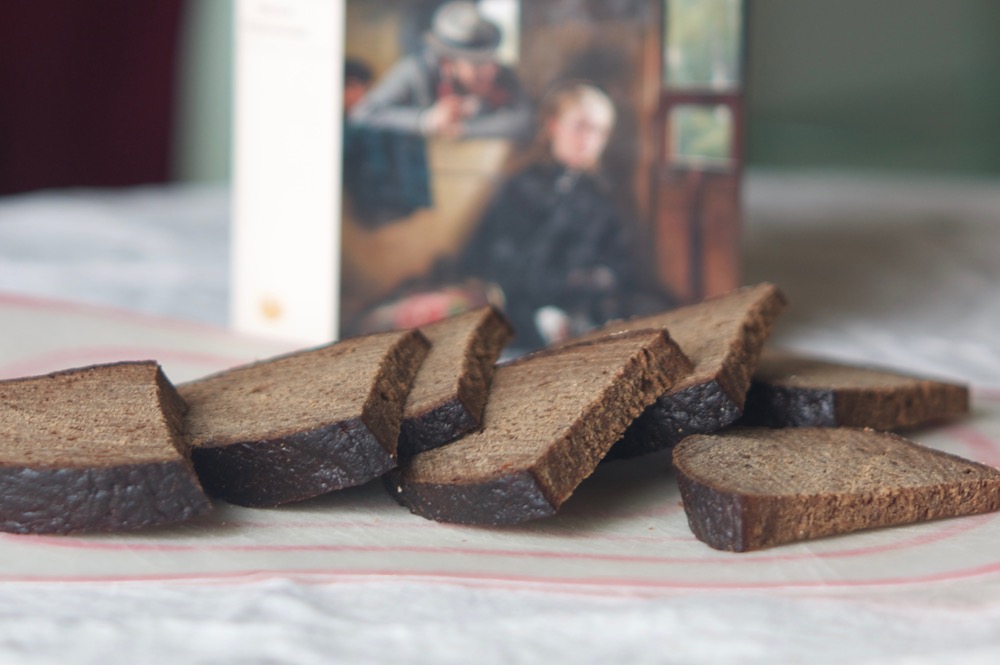
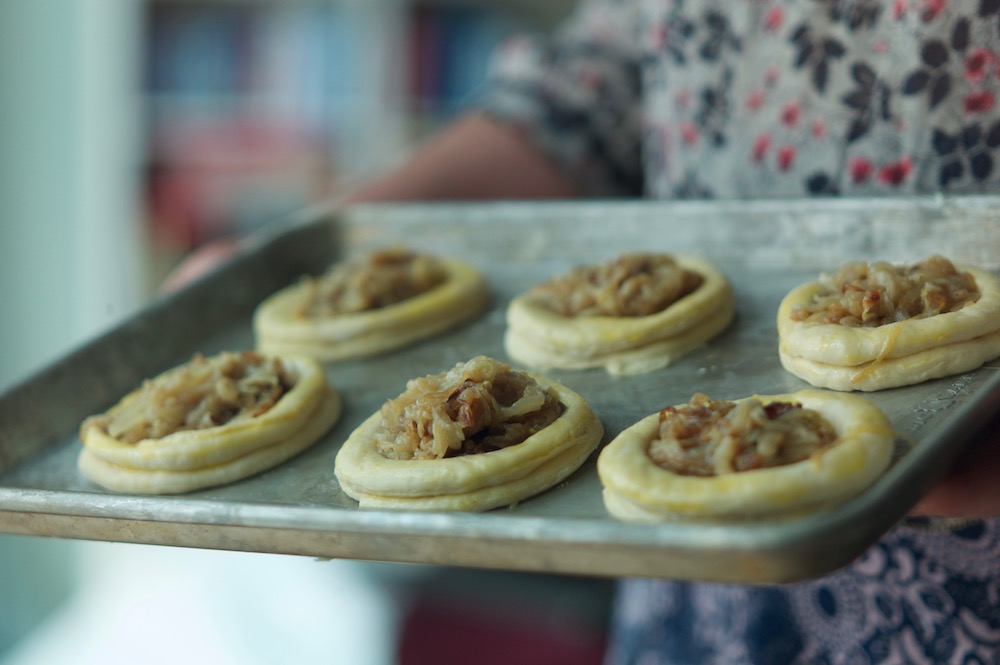
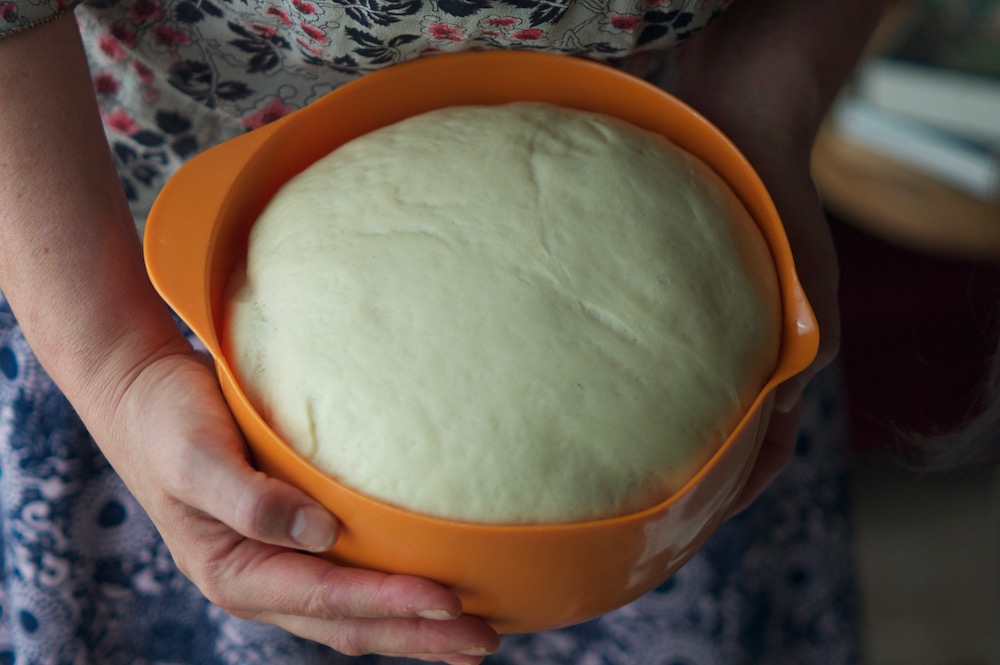

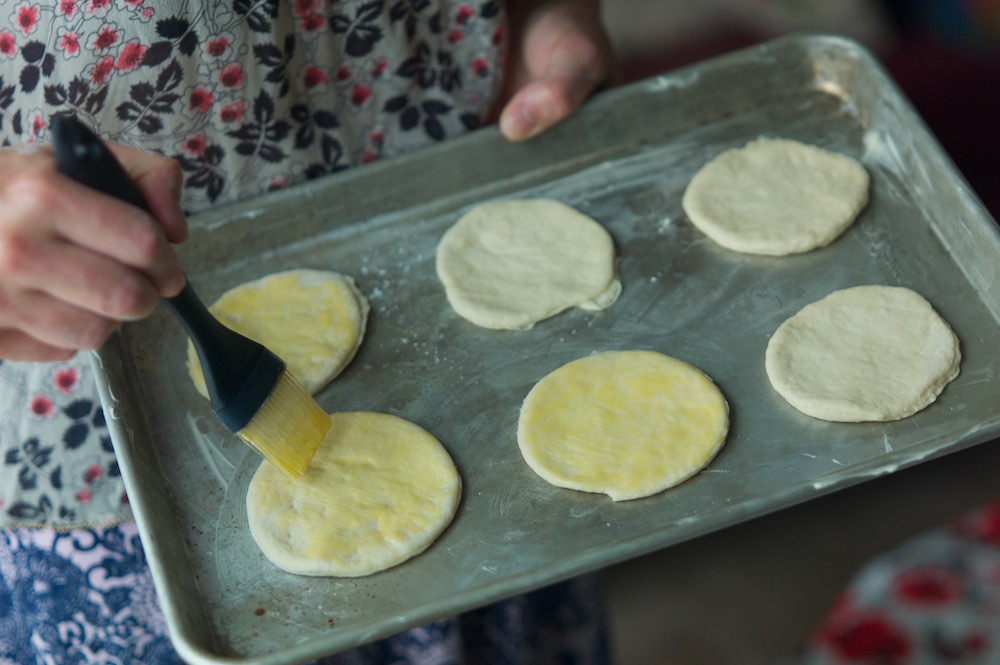
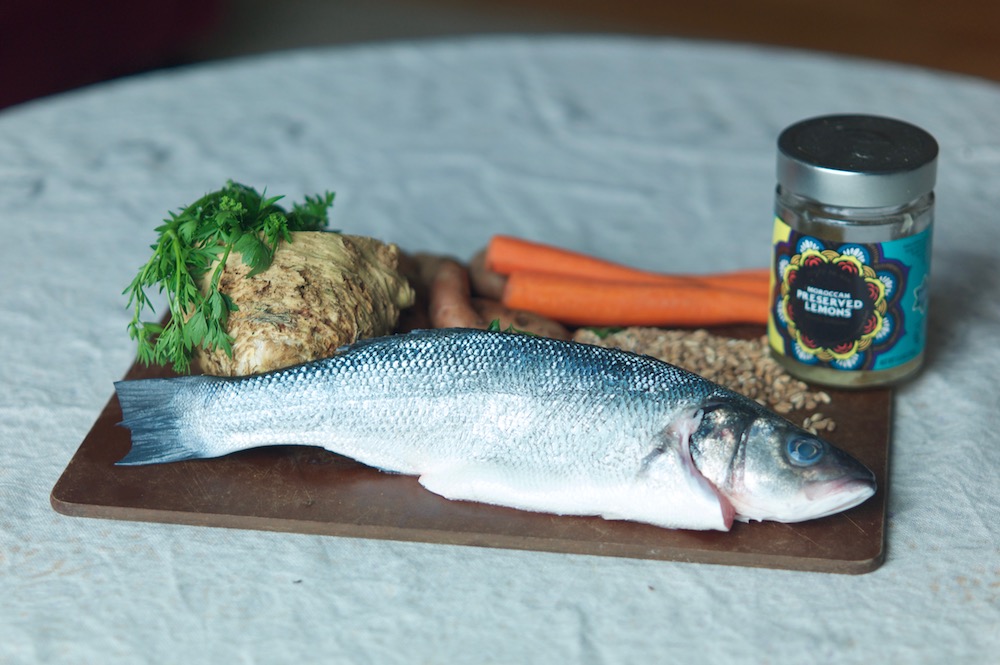
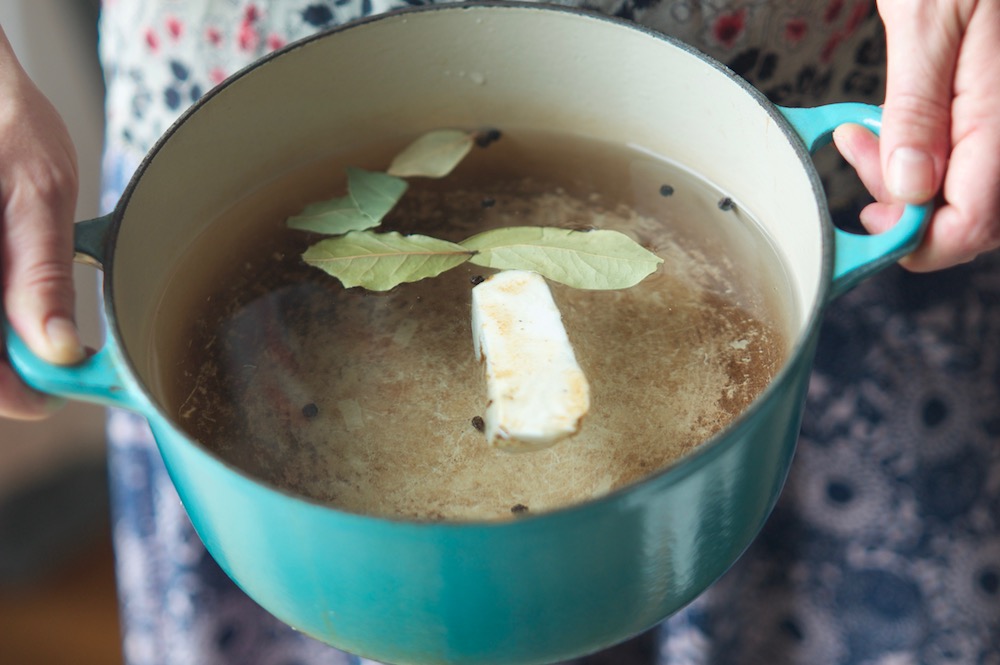
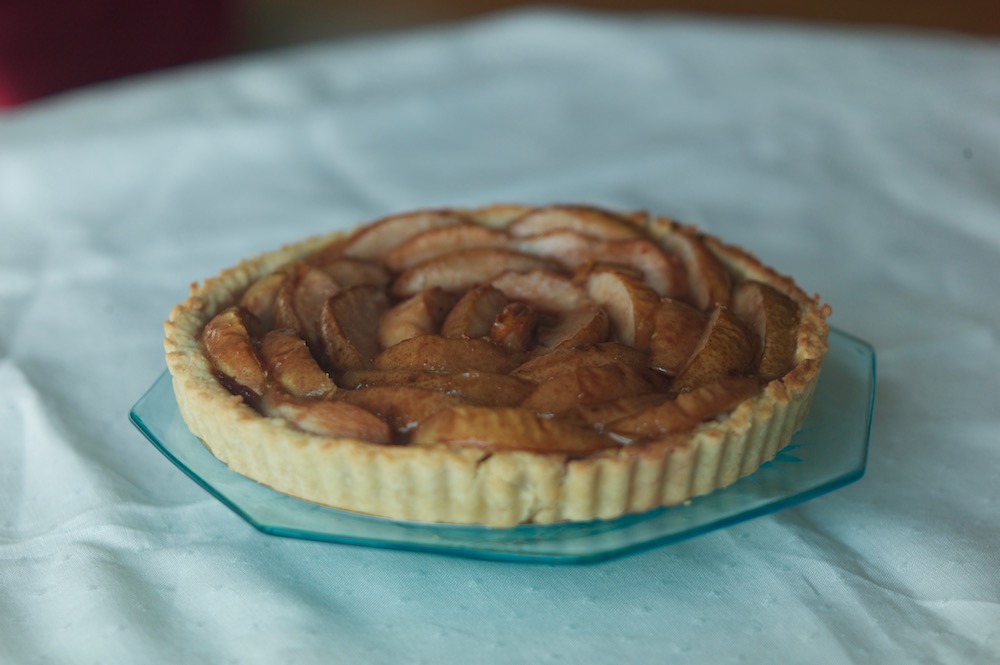
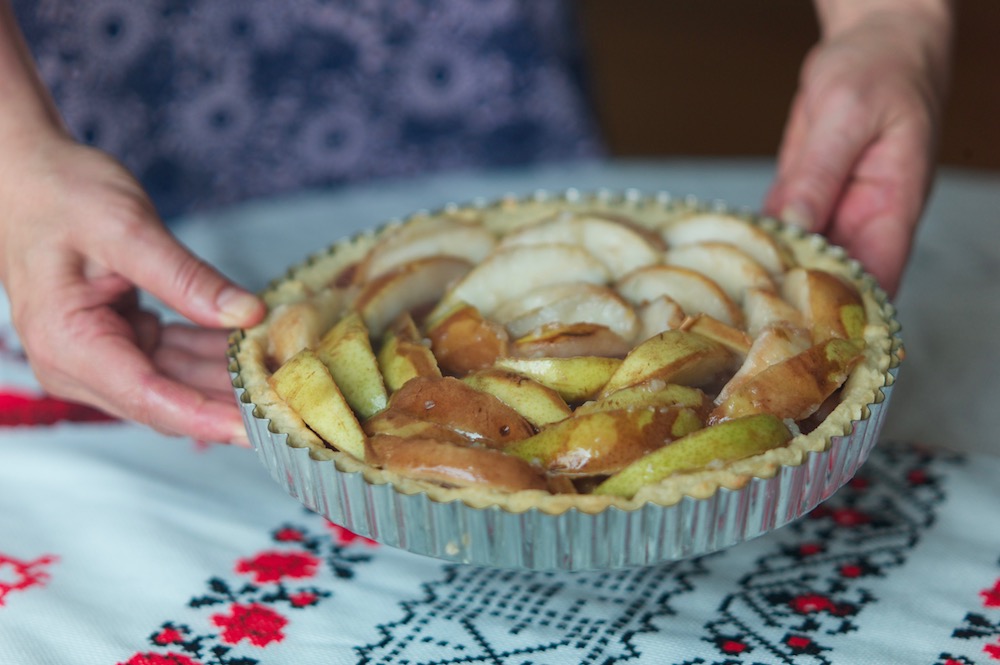
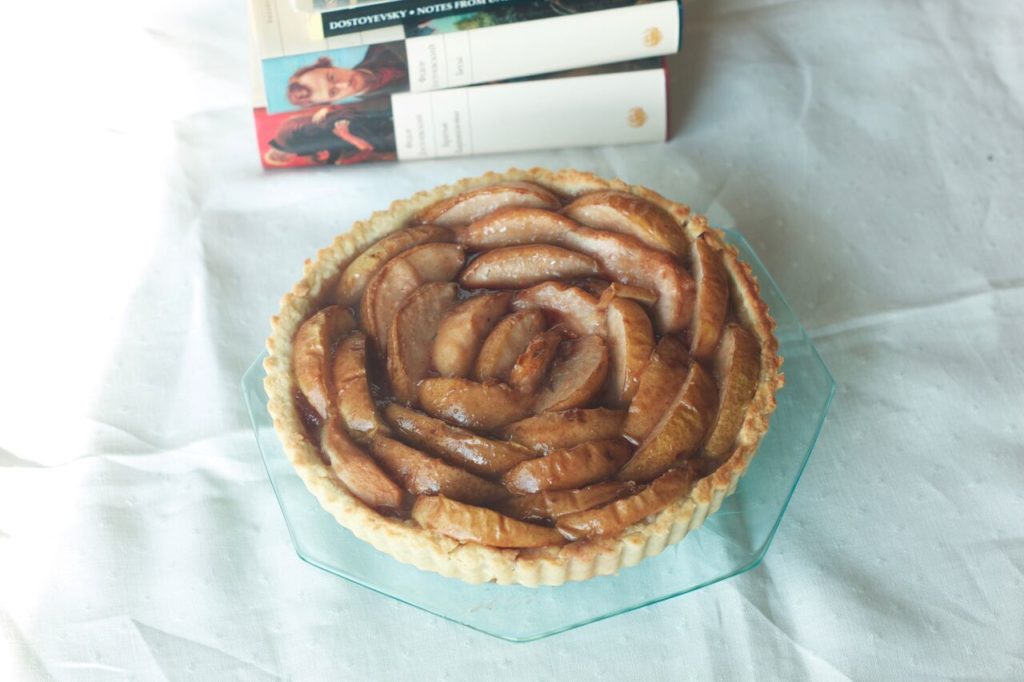
Comments
Post a Comment